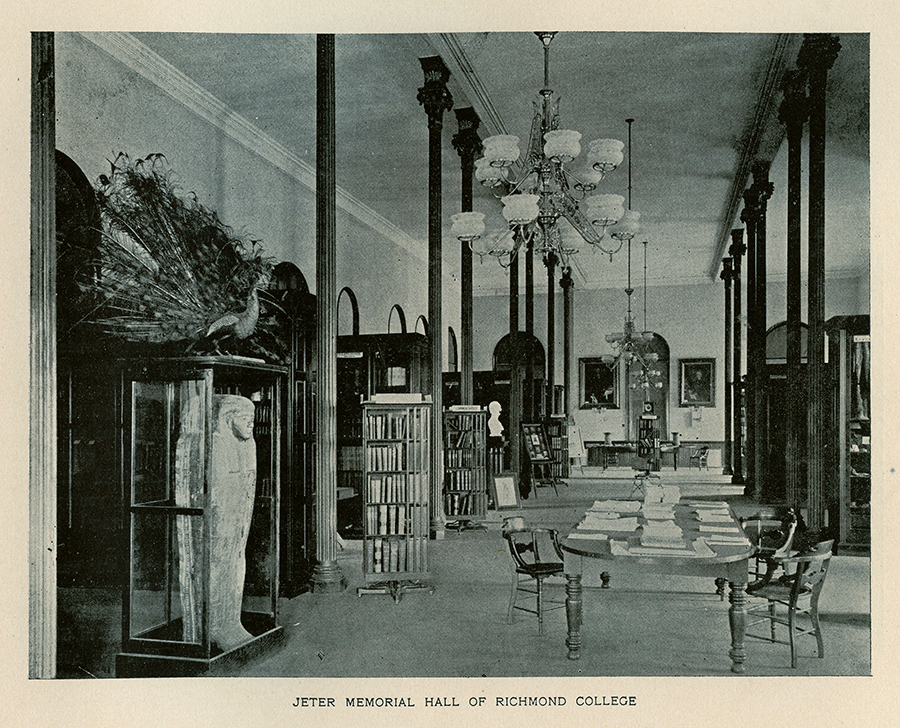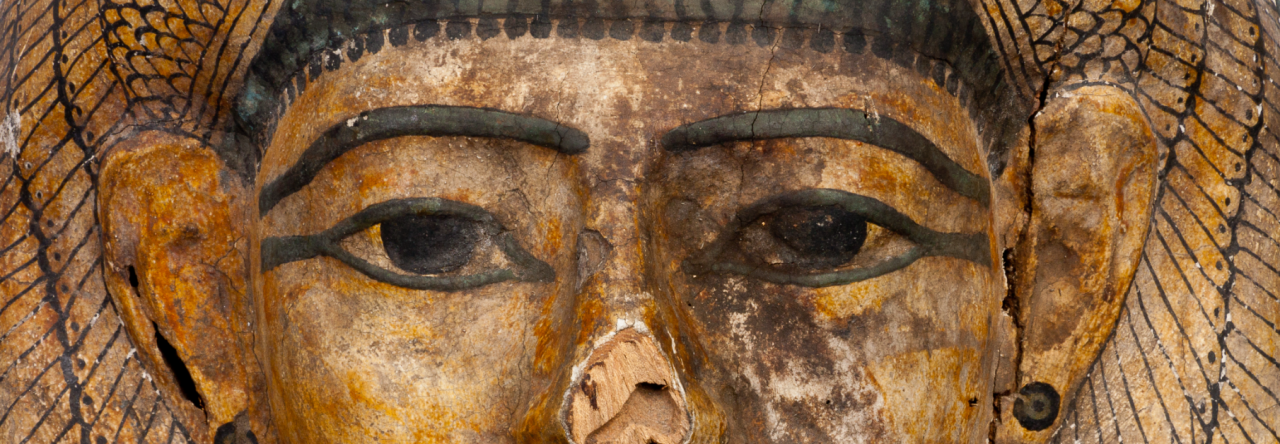A teaching collection in the Department of Classical Studies at the University of Richmond, the Ancient World Gallery is a space for learning about and being inspired by the art and material culture of the ancient Mediterranean world.
First opened in North Court in 1979 by Classics professor Stuart Wheeler, the gallery houses antiquities that had been collected for the museum of Richmond College at the end of the 19th century, including the mummified remains and coffin of an Egyptian woman named Ti-Ameny-Net. Donations from alumni, the estate of Dr. May Keller, first dean of Westhampton College, and Mrs. Gertrude Murrell DuPont Howland have enhanced the collection and supported related research, events, and student travel. Filled with artifacts of ancient Greek, Roman, Egyptian, and Near Eastern cultures, the gallery invites visitors to gain a deeper understanding of the ancient Mediterranean world as a whole.
History of the Gallery
The museum of Richmond College began in the 1870s with a single case of “rocks, fossils, dried plants, and curios.” According to an 1876 letter from J.L.M. Curry just after he had acquired the mummified remains and coffin of Ti-Ameny-Net for the museum, the goal was to build “a collection, which, while education in its influences on the students, may be valuable to the city and state.” Curry and other professors and trustees made donations “with the hope that the friends of the College and others interested in having a Museum in our capital may be stimulated to collect and present other objects of historical, ethnological, societelogical, and geological value.”
By the 1890s, a fine assortment of artifacts, artworks, plaster casts of ancient sculptures, portraits, flags, historical documents, and biological and geological specimens had been collected and were prominently displayed in the Thomas Memorial Art Hall and library of Jeter Memorial Hall. With the move to the present campus in 1914, the collection of Richmond College was dispersed among various buildings and some items were placed in storage. In 1933, many of the antiquities and natural specimens were brought together in the Biology Museum in the new Maryland Hall. Other items, especially geological samples, ended up in the Rare Books Room in Boatwright Library. In the 1970s, many of the items in the Biology Museum were moved to the Lora Robins Gallery while those relating to the ancient Mediterranean would become the core collection of the Ancient World Gallery in the Department of Classical Studies, North Court, thanks to the vision and efforts of Classics professor Stuart Wheeler.
sculptures, portraits, flags, historical documents, and biological and geological specimens had been collected and were prominently displayed in the Thomas Memorial Art Hall and library of Jeter Memorial Hall. With the move to the present campus in 1914, the collection of Richmond College was dispersed among various buildings and some items were placed in storage. In 1933, many of the antiquities and natural specimens were brought together in the Biology Museum in the new Maryland Hall. Other items, especially geological samples, ended up in the Rare Books Room in Boatwright Library. In the 1970s, many of the items in the Biology Museum were moved to the Lora Robins Gallery while those relating to the ancient Mediterranean would become the core collection of the Ancient World Gallery in the Department of Classical Studies, North Court, thanks to the vision and efforts of Classics professor Stuart Wheeler.
From 1979 through the early 2000s the gallery collection steadily grew with donations from members and friends of the department. Talbot Rayl Selby, professor of Classical Studies from 1962 – 1989, donated more than 100 volumes of classical and humanistic scholarship from as early as the 16th century. With the generous support of Mrs. Gertrude Howland, Stuart Wheeler acquired a substantial number of high-quality modern replicas of ancient pottery and bronzes to demonstrate the history and development of Greek art. In 2010, the Department of Classical Studies adopted a new policy of not acquiring of accepting donations of ancient objects that have no recorded provenance prior to 1970, as a means of ensuring that the gallery in no way contributes to the looting and destruction of archaeological sites and the ensuing loss of archaeological context and cultural heritage.

